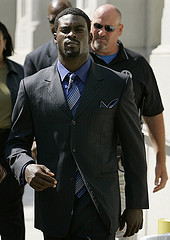Illiberalism, disappearing truth and collapsing thirdness form a virulent triumvirate that explains many of the most insidious phenomena of this post-truth age.
Attacks on science are attacks on truths that cannot be colonized by one’s subjectivity. The same is true with the right’s paranoia based assault on competence and expertise. The retort “fake news” suffices as an instantly negates truth, and with that the possibility of critical thought. These days the rule of law, perhaps the cornerstone of democratic, cultural thirdness, seems like a frog in a slowly boiling pot of water. And then, speaking of dualism, there is what is likely the most dangerous toxin in today’s political surround; the breakdown of bipartisanship. As political scientists Steven Levitsky and Daniel Ziblatt write in their book How Democracies Die, “if one thing is clear from studying breakdowns throughout history, it’s that extreme polarization can kill democracy.”
Division intro
Beginning with the battle between Federalists and Republicans, divisions have been endemic to American democracy. What is new, however, is the nature of American division. Where once divisions occurred within political parties, the divide now is between the parties. These days, America is being torn apart by a seemingly irreconcilable partisanship in which neither the red mother nor the blue mother is willing to let go for the good of the child, and the only special interest that is not heavily organized and funded is the common interest.
Interestingly, a number of studies show surprising between-party agreement about policy and ideology. And yet, as Eric Levitz writes in Intelligencer, “these myriad areas of agreement have been no bulwark against hyperpartisanship: Ordinary Republican and Democratic voters … still fear and loathe each other more than at any point in our nation’s modern history.”
The reason for this fear and loathing, Levitz argues, is that as whites, Christians, and rural dwellers find their home in the Republican party, and nonwhites, liberals and urbanites identify as Democrats, the parties divide less along policy lines than they do along racial, religious and regional identities.
Dualism
Again, these identity based divides may represent be the single greatest threat America’s experiment in liberal democracy. When parties are diverse identity-wise, it is possible to vote across party lines without being perceived as betraying your identity group. However, as University of Maryland political scientist Lilliana Mason points out, when one’s social identities “line up behind one party or the other, … the humiliation of loss is amplified.”
Here, Mason is speaking to the underpinnings of the fear and loathing that is pathognomic of identity politics, and she is also speaking to the dynamic of dualism. This dynamic, which Hoffman (2002) aptly describes as “either I’m crazy or you are”, and which Jessica Benjamin also refers to as complementary, or twoness relations, occurs when the both-and of thirdness collapses into the either or of twoness. Eric Levitz references this in the political world when he notes that voters feel that the party that is not their own “poses an existential threat to their bedrock ideals”. Bouncing back to the psychoanalytic realm, Britton’s describes the way that difficult patients experience a kind of “psychic atopia” in which they experience the other as dangerous allergens. This idea is also found in the social psychology construct of “particularized trust”, which as Eric Uslaner notes, involves the idea that the more you trust people within your group, the less you trust people not in your group.
Within this dualist, illiberal mindset, xenophobia is ubiquitous, because everything that does not conform to one’s own identity is both foreign and to be feared. Just as Republicans are seen by Democrats as violent racists seeking to hijack the principles most dear to their liberal sense of identity, Democrats are seen by Republicans as elitist pussies seeking to force gay rights and same sex marriage down the throats.
Truth
Returning now to today’s through line, cultural and political dualism, like the dualist structure of illiberal thinking, are caused by the disappearance of truth as a meaningful, thirdness structuring element. This is what George Orwell understood when, anticipating Jessica Benjamin by 70 years, he wrote the words I referenced at the beginning of this talk: “without the protection of truth, we “devolve into either-or, doer – done to”.
A quick look at the nature of ideological disagreement offers a window into the relationship between truth and dualist polarization that characterizes identity politics. When you disagree with someone about an idea, that idea, or truth, occupies a third position outside of the two-ness of your mind and their mind. The tacit agreement that there is a truth worthy of disagreement causes each of you to stand outside of your own subjectivity, reflecting on your mind, their mind and that truth. The idea is, in Coehlo’s (2015) words, a “material presence that interrupts an already constituted pair”, and it creates, in Britton’s (1998) terms, “a third position in mental space …from which the subjective self can be observed having a relationship with an idea”. The agreement that there is a truth there is like the stick that holds the pile together in a game of pick up sticks.
In the world of identity politics, however, there is no lynch stick of truth about which to disagree. Arguments may appear to occur on ideological grounds, but this is essentially a sham, a cover for the real argument, which is about identity. Absent a truth that is worthy of disagreement, fragile triadic structure collapses into do or be done to dualism, which in the world of identity politics takes the shape of who is right, who is wrong, who is righteous, who is shameful, who is deserving, who is not, who is pure and who is impure, and so on.
And again, the truth – thirdness relationship is bidirectional; just as the absence of truth collapses thirdness, the absence of thirdness disappears truth. An example of the latter may be found in the perplexing phenomena of the Christian right’s embrace of the spectacularly immoral Trump. The reason for this is that group allegiance is more important than the idea, or truth, of moral principle. Trump and his panderers can grift to their heart’s content as long as they build that wall, outlaw abortion and same sex marriage, and take a hard line about immigration. Here again, the point is not policy, it’s that policy statements are dog whistles tell the base “we are with you, and against them. It’s not the economy, stupid – it’s identity.
Fear
The paranoia driven fear and loathing of identity politics highlights another elemental ingredient in this today’s toxic mix: to understand dualism and polarization, you have to appreciate the role of fear.
Fifty thousand years ago two of our ancestors were standing in a clearing. A lion approached. The first guy said “interesting animal, don’t you think?”. The second guy, in a moment of adaptive illiberalism, ran. And, once he got away, he more than likely ran back to the safety of his tribe. We are descended from the second guy.
Illiberalism and tribalism are related, adaptive responses, among other things biologically mediated, to fear. In the face of ANS arousal, thinking simplifies and concretizes. The need for the safety of affiliation increases. While open, dialectical thinking and across group affiliations are healthy if you are living in a relatively safe liberal democracy, in fear based culture the fight or flight nature of Illiberalism and tribalism are healthy norms.. And what is scary is how mutually reinforcing the fear/illiberalism cycle is. Biologically speaking, ANS arousal leads to the adaptive dualism of illiberalism and tribalism, Illiberalism and tribalism, in turn, generate more fear, and more fear generates more illiberalism and tribalism. Compromise, negotiation, and, to again borrow from Benjamin, surrender, are seen as synonymous with defeat. Power and bullying become the winning currency. And critical thinking and intelligent discourse are the equivalent of bringing a goldfish to a gunfight.





